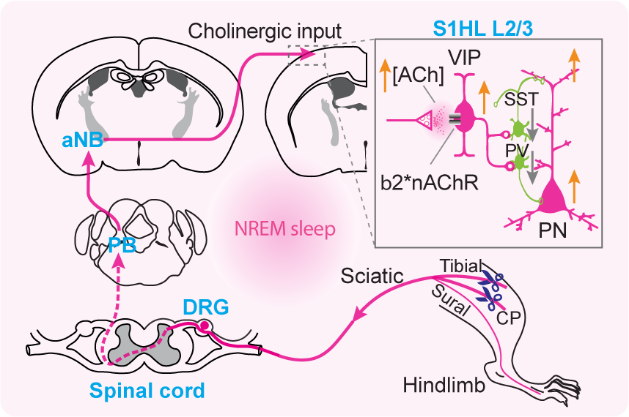You are here
Circuit Mechanisms of neuropathic pain development
Speakers
Abstract
Neuropathic pain is a debilitating chronic condition characterized by significant changes in both the peripheral and central nervous systems. However, the mechanisms by which changes in neuronal circuits contribute to the development of neuropathic pain remain unclear. In this talk, I will present evidence showing that peripheral nerve injury induces synchronized activity in dorsal root ganglion neurons, which subsequently triggers changes in brain circuits leading to chronic pain. Furthermore, peripheral nerve injury increases the activity of cholinergic neurons in the basal forebrain during non-rapid eye movement (NREM) sleep. This heightened cholinergic activity, driven by increased input from the parabrachial nucleus, activates VIP-expressing interneurons in the primary somatosensory cortex, resulting in cortical disinhibition that contributes to allodynia. Moreover, our recent studies have identified a distinct mesocortical glutamatergic pathway that critically modulates neuropathic pain independent of dopamine signaling. Together, these findings illuminate key circuit mechanisms underlying neuropathic pain and suggest that targeting the pain pathway during NREM sleep may provide a potential therapeutic strategy to prevent both the onset and persistence of chronic pain.

